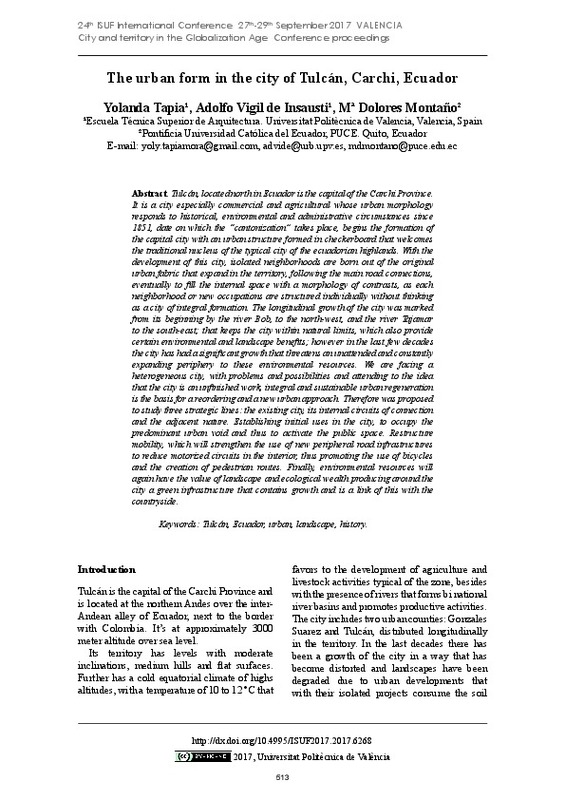JavaScript is disabled for your browser. Some features of this site may not work without it.
Buscar en RiuNet
Listar
Mi cuenta
Estadísticas
Ayuda RiuNet
Admin. UPV
The urban form in the city of Tulcán, Carchi - Ecuador
Mostrar el registro completo del ítem
Tapia, Y.; Vigil De Insausti, A.; Montaño, MD. (2018). The urban form in the city of Tulcán, Carchi - Ecuador. En 24th ISUF International Conference. Book of Papers. Editorial Universitat Politècnica de València. 513-522. https://doi.org/10.4995/ISUF2017.2017.6268
Por favor, use este identificador para citar o enlazar este ítem: http://hdl.handle.net/10251/114276
Ficheros en el ítem
Metadatos del ítem
| Título: | The urban form in the city of Tulcán, Carchi - Ecuador | |
| Autor: | Tapia, Yolanda Montaño, María Dolores | |
| Entidad UPV: |
|
|
| Fecha difusión: |
|
|
| Resumen: |
[EN] Tulcán, located north in Ecuador is the capital of the Carchi Province. It is a city especially commercial and agricultural whose urban morphology responds to historical, environmental and administrative circumstances ...[+]
|
|
| Palabras clave: |
|
|
| Derechos de uso: | Reconocimiento - No comercial - Sin obra derivada (by-nc-nd) | |
| ISBN: |
|
|
| Fuente: |
|
|
| DOI: |
|
|
| Editorial: |
|
|
| Versión del editor: | http://ocs.editorial.upv.es/index.php/ISUF/ISUF2017/paper/view/6268 | |
| Título del congreso: |
|
|
| Lugar del congreso: |
|
|
| Fecha congreso: |
|
|
| Tipo: |
|









